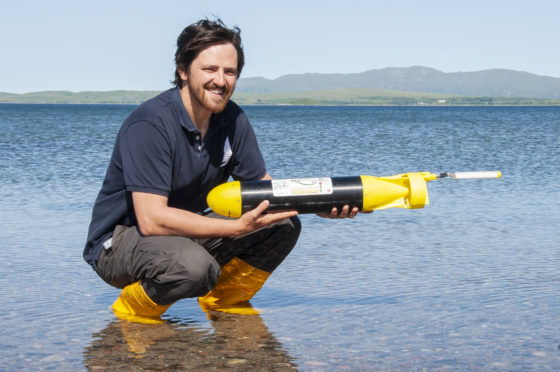An underwater robotic vehicle will go on an Arctic research mission deemed too dangerous for humans in a bid to help scientists understand the true extent of melting from Arctic glaciers.
A team from the Scottish Association for Marine Science (SAMS) in Oban, led by oceanographer Professor Mark Inall, will deploy a small autonomous underwater vehicle (AUV) known as an ecoSUB to the foot of a melting glacier in Arctic Norway.
The aim is to learn more about the effect of meltwater on a process called “calving”, which causes huge chunks of ice to break off the glacier edge.
Less than a metre in length and just four kilogrammes in weight, the ecoSUB will enter one of the most hostile environments on the planet to take measurements such as temperature and salinity as far down as 100 metres below Kronebreen glacier on Svalbard.
Professor Inall said: “It would simply be too dangerous to go into such a hostile and remote environment with a boat. Not only is there a risk of falling ice, but large-scale calving causes huge waves, so it is a dangerous environment.
“That is where the ecoSUB will come into its own, working at the front line of Arctic science.”
SAMS will also deploy a larger AUV further from the glacier to take more detailed measurements and a drone will take aerial images of the glacier to help build a 3D map, whilst capturing a bird’s-eye view of calving events.
The team travels to Svalbard on Wednesday August 7.
